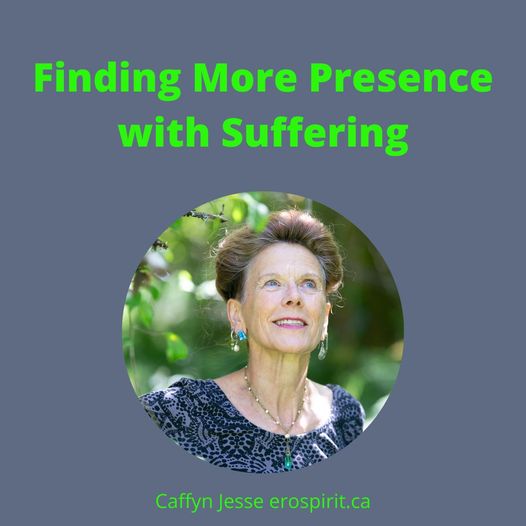I understand how, in the shock of trauma, there is a moment when hyperactivated nervous systems reach a zenith of panic. Suddenly, we experience a dorsal-vagal drop. We abandon our selves. It is as if there is no more separate self to inhabit. We have no ground beneath our feet. There are no boundaries. There is no mind. We exit the storyline of linear time. We cannot act on our own behalf, flee, fight or cry for help. Heartbeat and breath slow down. Awareness of agony is dimmed. We half-die, before we die. Through dissociative self-abandonment, we escape being present with suffering.
It is so merciful that, in the immediacy of trauma, we half-die before we die. But what a loss, if we survive without integrating our traumas, because then we live half-dead, numbed and atomized. Everyone has their own story. For me, there was a violent assault by a stranger, when I was 9 months old, along with a sustained experience of family violence. Dissociative self-abandonment mercifully truncated my suffering. But without context, companionship and culture to hold me so I could mend, dissociation became a lifelong neuroendocrine habit. Like so many others, in a world where trauma and neglect are ordinary and untended, my biorhythms got muted. My body and soul contracted and collapsed; my neuroendocrine system cycled within constraints that kept me from the extremes of feeling fully. Agonies were dimmed, along with ecstasies. I could not be present with suffering.
Last weekend I found context and support enough to come all the way home to my body again. In the arms of lover earth, with the help of psychedelic medicine, somatic sexual wellness, a well-guided temple of courageous companions, and a life full of loving friends, I finally laid still and remembered my infant body being helpless, violated and overwhelmed. I could feel my own embodied kinship with the suffering of lover earth, and all the many beings suffering upon it. I could be present with suffering, because I know I am not alone.
We each have a singular story of suffering, and we belong to a biosphere where there is so much suffering. By knowing we are not alone in it, we can each learn to hold our own in it. Together, we can be present with suffering; we can make it our own.
There is an actual neuroendocrine experience of embodied unity, and we can weave it. Loving relationships, counternormative understandings, somatic practices and psychedelic medicines all help unite us in the experience of embodied love. In love, over time, we can ease out of our atomizing contractions and isolating collapses. We can reach back in time, to hold the suffering of human and more-than-human ancestors. We can reach forward in time, to hold the suffering of generations to come. Together, we can discern the nested rhythms. Extremes of agony and ecstasy can be held, with embodied presence, inside of long arcs of subtle arousal, sustained support, and gentle peace.

